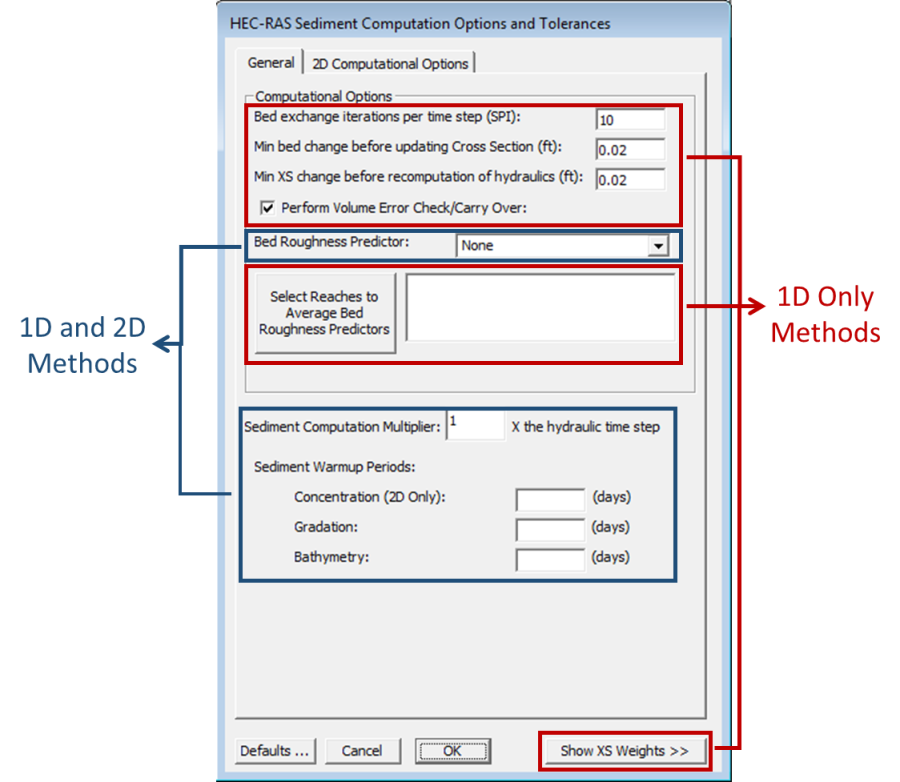General
The General tab of the Sediment Computation Options and Tolerances editor contains the 1D computational options but also includes some options which the 1D and 2D sediment models share (see figure below). The 2D sediment transport model uses the Bed Roughness Predictor, the Computation Multiplierand Warmup Periods.

Figure 2 56. General tab of the Sediment Computation Options and Tolerances editor.
Bed Roughness Predictor
The Bed Roughness Predictor options include three methods:
- Limerinos
- Brownlie
- Van Rijn
The bed roughness predictor computes bed roughness dynamically based on the hydrodynamics and bed materials. The sediment transport model and hydraulic models use the computed roughness, then update it based on the new hydraulics and bed materials. The 1D model allows users to define sub-reaches to apply the bed roughness predictor, but the 2D model will apply the selected algorithm to the all wet cells.
When using bed-roughness predictor it is recommended to also output the cell bed roughness's and evaluate the computed bed roughness to maker sure results are realistic.
Warmup Method
HEC-RAS applies sediment warmup period slightly differently in 1D and 2D sediment transport. The 1D model adds the warmup period to the simulation, as an additional (negative) time period computed before the simulation starts. In 2D the warmup period is considered as part of the simulation time period.
The 2D model also computes three sediment warmup periods, in sequence (after the hydraulic warmup). First, HEC-RAS computes equilibrium concentrations in each cell based on the first specified flow or stage for the first time step at each hydraulic boundary, the boundary sediment fluxes, and the bed gradations. The Concentration warmup is only available in 2D sediment transport, and avoids the initial erosion associated with starting a model with clear water throughout the domain.

Figure 2 57. Specifying the warmup periods for 2D simulations.
After the concentration warmup, the 2D model warms up the bed gradations. Starting with the cell concetnrations at the end of the concentration warmup, HEC-RAS will run the unsteady, 2D, sediment model with constant flow, stage, and sediment boundary condtions (those associated with the first time step in the simulation window). During the gradation warmup, HEC-RAS will not adjust the bed, the elevation-volume curves for the cells, or the elevation-area curves of the cell faces. It will only ajust the bed gradations, allowing them to fine or (more often) coarsen in response to the flow field. The 2D sediment model will also begin to develop vertical gradational stratigraphy in this warmup period, even bed layers were not initially specified.
After the Gradation warmup, the 2D model will warmup the bathymetry. In this warmup period, the model will still hold they hydraulic and sediment boundary conditions constant, but will allow the bed elevations, and the elevation-volume/elevation-area curves to adjust in response to transport. This phase will tend to fill local depresions, scour local raised areas, plane out bed forms, highlight problems with the terrain, and, generally smooth the terrain.